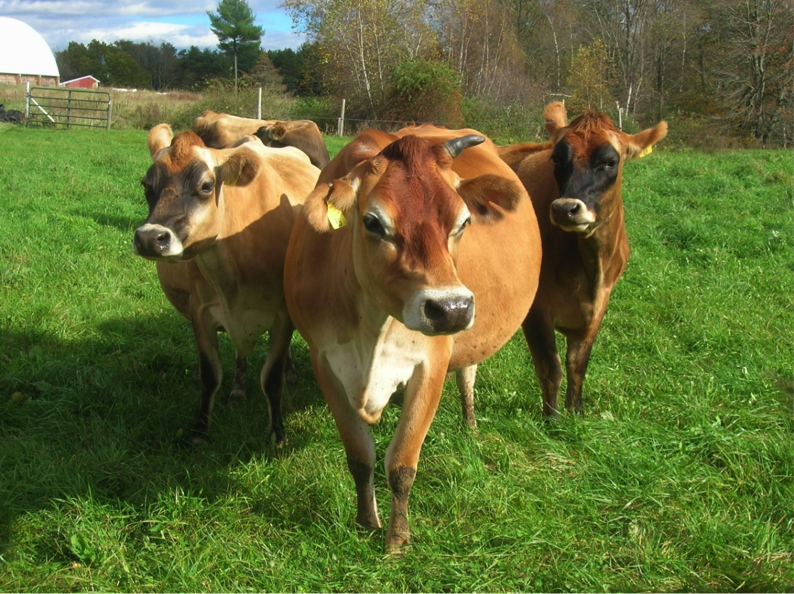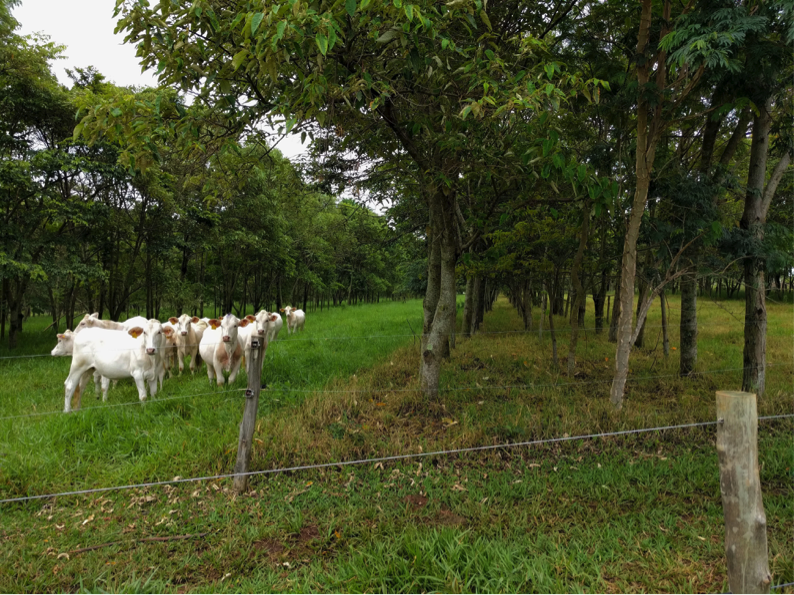
EcoPic: The Grass-fed connection between New England and Brazil
By Nell Campbell
- How do changes in grazed pasture management affect soil carbon and nitrogen cycling?
- How do these changes affect the environmental impacts of the resulting agricultural products (i.e. meat, milk)?
- Should some pasture areas be managed differently, or be used to produce something else entirely?
These three questions form the core of two research efforts that I currently have the luck and opportunity to bridge, building connections based on two key commonalities: (1) the focus on pasture systems, and (2) the representation of new understanding in process-based models for soil and plant carbon and nitrogen in order to scale between field experiments and larger temporal and spatial dynamics.
Pastures play a key role in the mosaic of agricultural land use for feed, food, fuel, and fiber production. Pasture systems are also central to questions of land use change, sustainable agroecosystem management, and understanding- perhaps mitigating- the impacts of future climate change.
However, the umbrella term ‘pasture’ covers great diversity in plant, livestock, and management practices that are difficult to track, characterize, or assess with confidence, particularly at large scales and across socieoeconomic circumstances. For example, industrial agricultural systems that maximize animal product yields will be very different from those of systems where livestock might be used as a form of banking either against poor crop production years or in place of currency.

The first project, based at the University of New Hampshire and funded by the US Department of Agriculture, has established a series of experimental sites to evaluate the impact of intensive rotational grazing in organic dairy production systems on (1) soil carbon, (2) plant production, and (3) greenhouse gas flux. By confining dairy cows to small pasture areas for short periods of time (i.e. intensive rotational grazing), plant biomass is consistently and thoroughly consumed. This tends to change plant responses-e.g. yield more rigorous regrowth-when compared to conventional grazing systems where typically cows are allowed to roam over larger areas. Experiments are ongoing at three sites—one each in New Hampshire (see photo), Vermont, and Maine—collecting data that will be used to parameterize a process-based ecosystem model called DNDC. In this project we are starting experimentally and using the DNDC model to scale up, ultimately to evaluate and predict potential impacts if this practice were widespread in New England.
The second project is funded by the São Paulo Research Foundation as part of their Global Sustainable Biofuels Initiative (GSBI), based at the University of Campinas in Brazil. The project aims to evaluate the potential for global crop-based bioenergy production as a source of renewable liquid fuels that can meet multiple criteria for economic and environmental sustainability. We are examining whether pasture intensification (i.e. producing more units of animal products per unit of land) on some agricultural lands can allow others to be converted to other purposes. This is part of an overarching goal to determine a more optimal use of existing agricultural lands. Could pasture intensification that meets criteria for economic and environmental sustainability free up land for crop-based biofuel production, without conflicting with crop production or causing land conversion from natural ecosystems? The latter is of high ecological importance, for example, to preserve ecosystem functions and biodiversity, particularly in sensitive and threatened systems like the Amazon.

In the GSBI project, we are using data from a variety of experimental and remote sensing sources to (1) ground-truth a global assessment of current pasture production, and (2) better understand pathways for sustainable pasture intensification. In this project are starting globally and scaling down, using a process-based model called DayCent to understand and predict more regionalized changes in pasture system management and land use. Given our base of operations, the natural place to start with this downscaling is Brazil, leading us to work on forming collaborative relationships with several Brazilian experimental researchers in order to parameterize DayCent for a diversity of pasture management systems. One such pasture system is shown in the bottom image.
What is the bridge that we are hoping to form between New England and Brazil? By using the DayCent and DNDC models—once parameterized for different pasture systems and global locations—we hope to develop a general understanding and evaluation of pasture systems. These two projects provide a unique opportunity to link learning and share datasets. We hope it will provide a stepping stone for continued international collaboration.
Nell Campbell is a past EcoPress editor and NREL grad student who received her PhD from CSU in 2015. She is currently on a six-month stint as a visiting scholar at the University of Campinas in Brazil, coming from the Earth Systems Research Center at the University of New Hampshire where she is a research scientist.
Connect with EcoPress on social media, like us on Facebook and follow us on Twitter, @nrel_science, for the more stories and news.